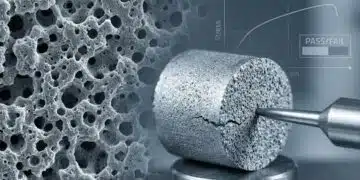The Coilcraft 016008C (0402) Series is the world’s smallest high-frequency-wirewound chip inductors. It features the highest Q factor on the market — up to 40% higher than the best thin-film counterparts.
High Q is required to minimize the insertion loss in RF antenna impedance matching circuits, which makes the 016008C ideal for high-frequency applications such as cell phones, wearable devices, and LTE or 5G IoT networks.
- World’s smallest high-frequency-wirewound chip inductor
- First metric 0402 (0.4 x 0.2 mm), performance-optimized 01005 size
- Extremely high Q, the highest in the market – higher than all thin film type
- Exceptionally low DCR – lower than all thin film type
- 36 inductance values from 0.45 nH to 24 nH
Source:
Coilcraft






























